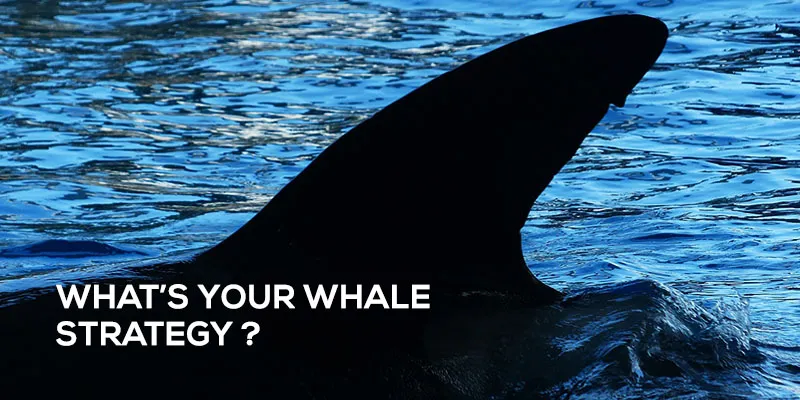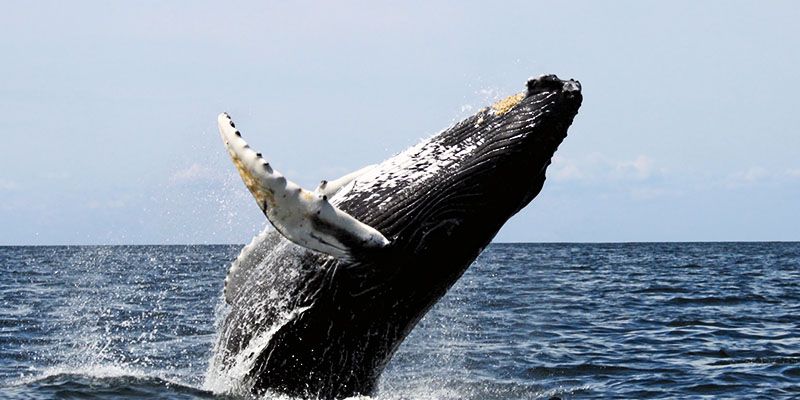Startups are often asked – who are your ‘best customers’ that will ultimately drive a majority of your growth?”
In a B2B context this could mean “who are those top 10 enterprise clients?”; for a consumer internet startup, “who are the largest core groups within your target user base”?

This article touches upon Amazon’s own ‘whale strategy’ as a starting point. As it outlines, Amazon’s whales are the top 1%: Prime subscribers who buy the Fire Phone. After observing this to be a common question across a large swath of our portfolio (and for all startups broadly), it’s interesting to explore this more deeply.
Who are my Whales, and how do I go about best acquiring them?
Whales are your must-win customers around whom you can build and grow your startup.
Whales are most often customers, but can also include strategic partners. For an enterprise B2B startup focused on learning / recruitment / education, who are the top 3-5 entities in each category that I must win? To cite a gaming example, I recently learnt that Atari, which almost floundered back in the '80s, got a strategic break when they were able to partner with giant retailer Sears and eventually crack a massive distribution channel. In Atari’s case, Sears was the big whale (aren’t they all big?) and through its direct distribution and marketing channels, including TV budgets, funneled Atari sales directly into consumers’ homes.
Whales then become your key references.
One point of view is to ‘start safe’ and deploy your products/platforms for tier 2 customers, learn from mistakes, tweak and then go for the big fish (oops, whale). However, given the long sales cycle to land large corporates, especially for B2B startups, you might as well start at the top. A competitor might even grab your whales while you’re “busy tweaking”. There’s also an indirect positive effect – each time a new prospect or VC asks you “so tell me who else is using you,” you have a good answer.
Customer discovery is essential.
In the Valley, I’ve often observed startups spend an inordinate time on ‘discovery’ via user interviews, out-in-the-field market research, trying to identify and interest their potential early adopters. While very useful, early adopters may not always be your whales. They may use your products but not always value / pay for them, yet their feedback is critical to developing your whale strategy. In ‘ad-monentizable content’ businesses, for example, we find two whale segments – a loyal, fast growing core target base of B2C users via targeted content is the first, but the brands (advertisers) who sign up and value this user base are the second. Both whales, a massively growing user base and paying advertisers, are essential to success.
Whale Acquisition Strategy (WAS)
Below are key questions central to identifying, targeting and engaging your whales (again, perhaps this applies a bit more to the B2B startup context).
- Of my Total Addressable Market (TAM), who are the top whales and how much of the market, across them, do they own?
- Do I know them directly and/or who in my immediate network can help me get to them (investors, advisors/mentors, friends/peers)?
- How does the market / peer customers see these whales (are they considered market leaders vs followers)?
- Do I have any unique competitive advantage to acquire these whales?
- What if I’m not able to win any of these whales – will I still thrive/survive/plateau. Is it a make or break?
- Is my team equipped to land these whales or do I need strategically hire to acquire them?
Extrapolating this, this paradigm can be applied to almost any business. For a globally aspirational startup, often landing the top 2-3 whales in a particular geography can be enough to establish leadership there, and move on and expand into additional regions.
Figuring out your WAS early on can significantly accelerate your lifecycle.
So, spot those Whales and go after them!











